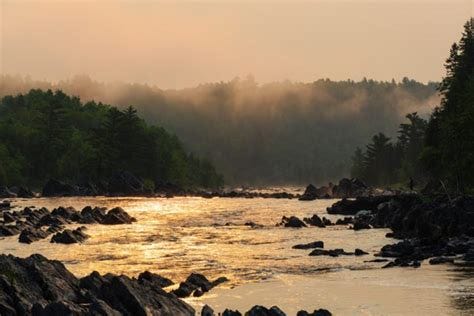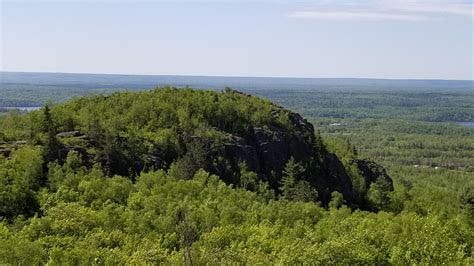A Long Trail Run to Love the Enemy in My Own Heart
My reasons for attempting the Voyageur 50 simplified loosely to:
- to see what happened, and
- because I could, and because
- something inside me yearned for a change of pace
“To see what happened” because I’d not yet attempted a long trail run nor even a marathon-length race.
“Because I could” because I have two legs and general athletic gifts.
“Something inside me yearned for a change of pace” because at that time much daily effort was spent on my computer or in commissioner meetings trying to figure out what on earth was happening in our elections.
A Long Trail Run
But as is so often true, what was envisioned varied from the experienced moments of that day, and varied once more from the lessons retained in memory today, half a year on.
In late July 2022 I rose early, drove from Barnum through the fog north on Interstate 35 to Carlton High School on the edge of Jay Cooke State Park, where hundreds of runners including me would attempt a 51-mile trail race.

This was the 40th anniversary of the event. Before setting off, recognition was given to multi-year finishers and we were all encouraged not to speed off at a 7-minute mile pace, since after the first mile the trail enters a technical single-track for about a mile on the south shore of the St. Louis River. (A gentle way of saying, “Don’t be the one who bottlenecks stronger runners by starting too fast.”)
I was impressed by the organization and preparation of the event staff and volunteers and of other runners and their supporters (from check-in to drop-bag collection). Less so it turned out for my own. Only the day prior I’d verbalized to my wife: “Do you how much sodium is in a pickle?” Beyond the obvious need for appropriate training, physical, mental, and spiritual, it is good to know one’s nutritional needs, in particular how much salt is lost through sweat per mile or hour of running under various conditions. There are basic things that happen if insufficient fuel and fluids are added to the physiological system to maintain balance. (On a recent run in Houston with my brother, he described how staying in a fat-burning zone those stores could be disproportionately drawn upon for longer-term energy.)
To Love the Enemy in My Own Heart
Between miles 3 and 9 I was starting to find a rhythm having passed through the technical opening section, the gradual forest, the segment beyond the dam, and down and up the steeper sections down river.
A few miles after the second aid station, somewhere between miles 12 and 15, my nutrition status was still strong (it did not ever become an issue). However my lack of physical preparation began to show. Hip flexors first, then knees. But I was still thoroughly enjoying all the newness. My first trail race. The fresh technical challenges. Where to put my feet to avoid roots and rocks or use them as leverage. Breathing. Taking in each turn in the track. This ray of sunlight through the trees. The water trickling over the path. Everything was intricately and inter-related.
While my legs were hurting, cardio-wise there was no problem. Since cardio is little issue on these longer runs (at least for those like me who walked, hiked, and jogged, in parts), participants can speak to each other or even carry on a conversation as they go along. I learned from a number of people about the history of the area, the strategy to complete such a journey (hike uphill, jog on flats and downhills), and in general how special an experience it was to be in nature and in this community of interesting folks.
Around mile 15 a man in his 60s who I’d passed earlier in the tricky “powerlines” section now passed me calmly and gave warm words of encouragement. It soothed the enemy in my heart that was beginning to speak out against the idea of doing this at all. (For example, I might have spent the time the previous night driving up or all day on race day campaigning for Minnesota Secretary of State given the election was about 12 days away—I do not remember this thought crossing my mind at all, however… such was the immersiveness of the experience.)
By mile 21 I had slowed considerably as the pain had increased in my hip flexors and knees and my leg muscles were fatiguing. It was around this time that the race leaders who had reached the halfway point and turned around were now passing me on the return journey. It pleases me in retrospect that I offered congrats and Way to Go’s. The entire day, and progressively as it unfolded, becoming hotter to go along with the moderate humidity, there was a growing sense of working together with everyone else. I certainly wouldn’t have made it to the halfway juncture (at The Zoo) if not for a few others who went along with me.
Given the pain each step was at that point, the goal prior to reaching mile 25.5 was to stop and get a lift back to the start. But once I’d refueled and rested, I found myself heading back up the steady hill that follows the famous overlook around mile 21 that is met again around mile 29.

With patient persistence and encouragement, verbal and nonverbal, of others, who energized me and inspired me—often with only a smile—the mile 32 aid station was reached. The race organizer informed us we were right on the cutoff. If we continued and kept a good pace, we could go right along. Only 19 more miles to the finish.
But I’d already learned the lessons I didn’t know I’d come for.
And this evening, reflecting through this piece, there is another:
Loving one’s enemy, I see now only in retrospect, includes loving the enemy in one’s own heart. Loving in the sense of wanting the best for it.
So much of what is experienced is a mirror on our own soul’s grasp of what is. And perhaps until what is is accepted, change cannot yet happen on these trails of life.
But once we do awaken to what is…
I’ll see you on the trails. And maybe you’ll see me.
Member discussion